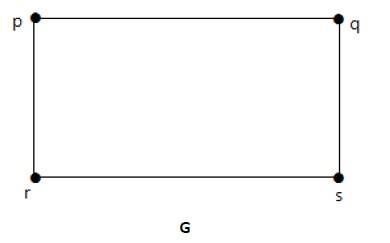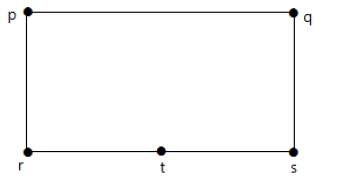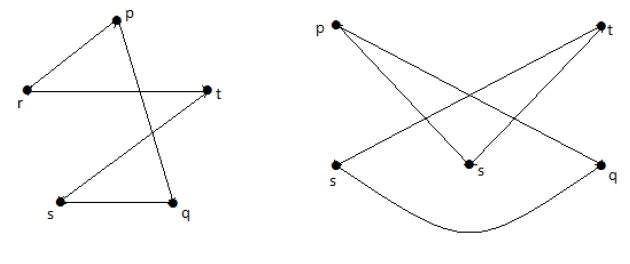
 Data Structure
Data Structure Networking
Networking RDBMS
RDBMS Operating System
Operating System Java
Java MS Excel
MS Excel iOS
iOS HTML
HTML CSS
CSS Android
Android Python
Python C Programming
C Programming C++
C++ C#
C# MongoDB
MongoDB MySQL
MySQL Javascript
Javascript PHP
PHP
- Selected Reading
- UPSC IAS Exams Notes
- Developer's Best Practices
- Questions and Answers
- Effective Resume Writing
- HR Interview Questions
- Computer Glossary
- Who is Who
Homomorphism
Two graphs G1 and G2 are said to be homomorphic, if each of these graphs can be obtained from the same graph 'G' by dividing some edges of G with more vertices. Take a look at the following example −

Divide the edge 'rs' into two edges by adding one vertex.

The graphs shown below are homomorphic to the first graph.

If G1 is isomorphic to G2, then G is homeomorphic to G2 but the converse need not be true.
Any graph with 4 or less vertices is planar.
Any graph with 8 or less edges is planar.
A complete graph Kn is planar if and only if n ≤ 4.
The complete bipartite graph Km, n is planar if and only if m ≤ 2 or n ≤ 2.
A simple non-planar graph with minimum number of vertices is the complete graph K5.
The simple non-planar graph with minimum number of edges is K3, 3.
Polyhedral graph
A simple connected planar graph is called a polyhedral graph if the degree of each vertex is ≥ 3, i.e., deg(V) ≥ 3 ∀ V ? G.
- 3|V| ≤ 2|E|
- 3|R| ≤ 2|E|

